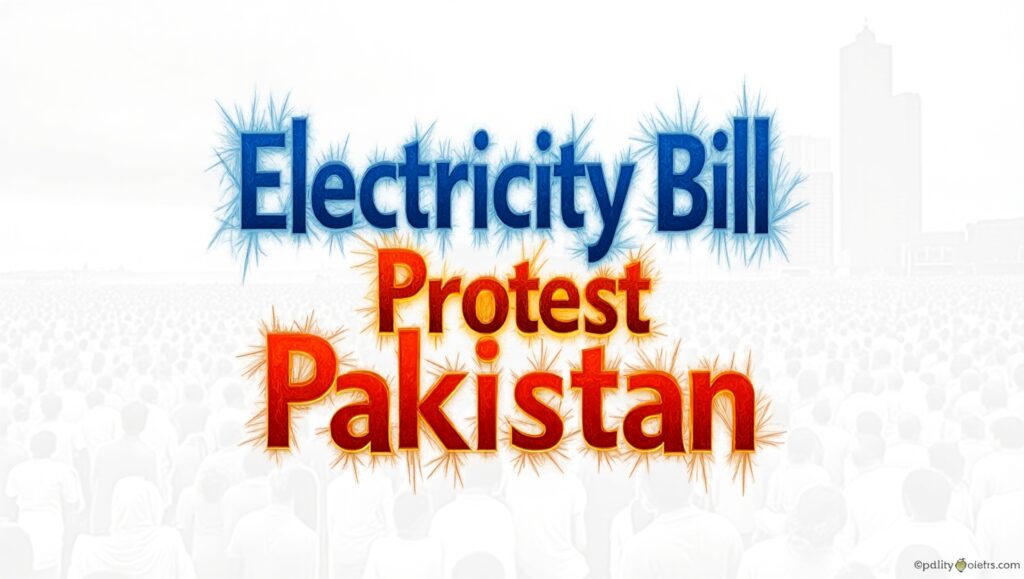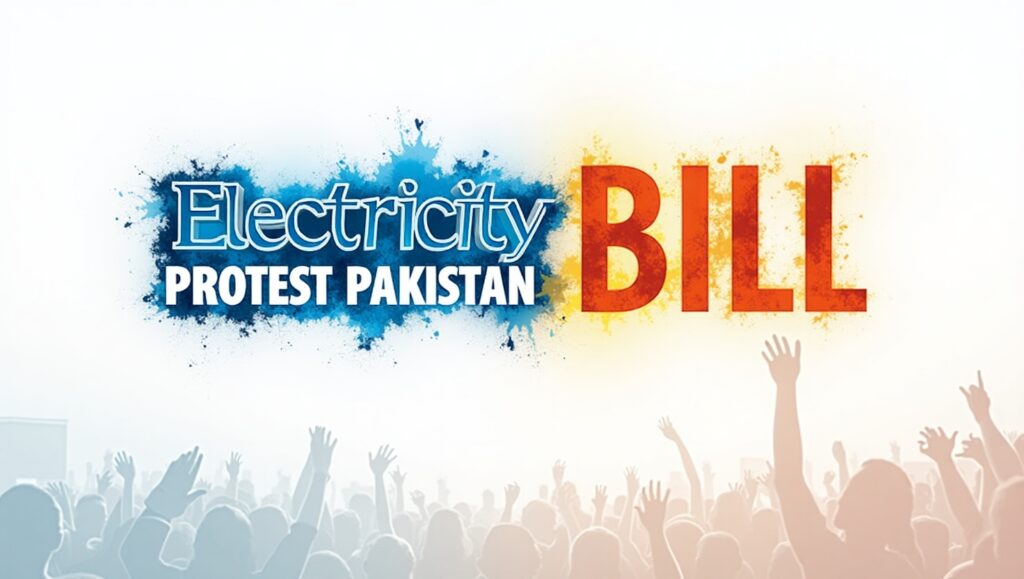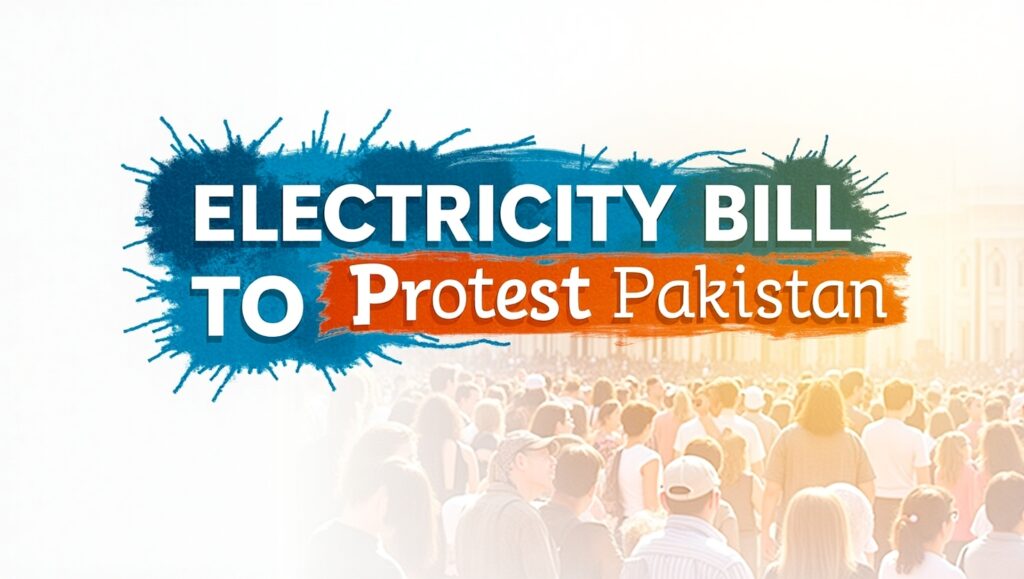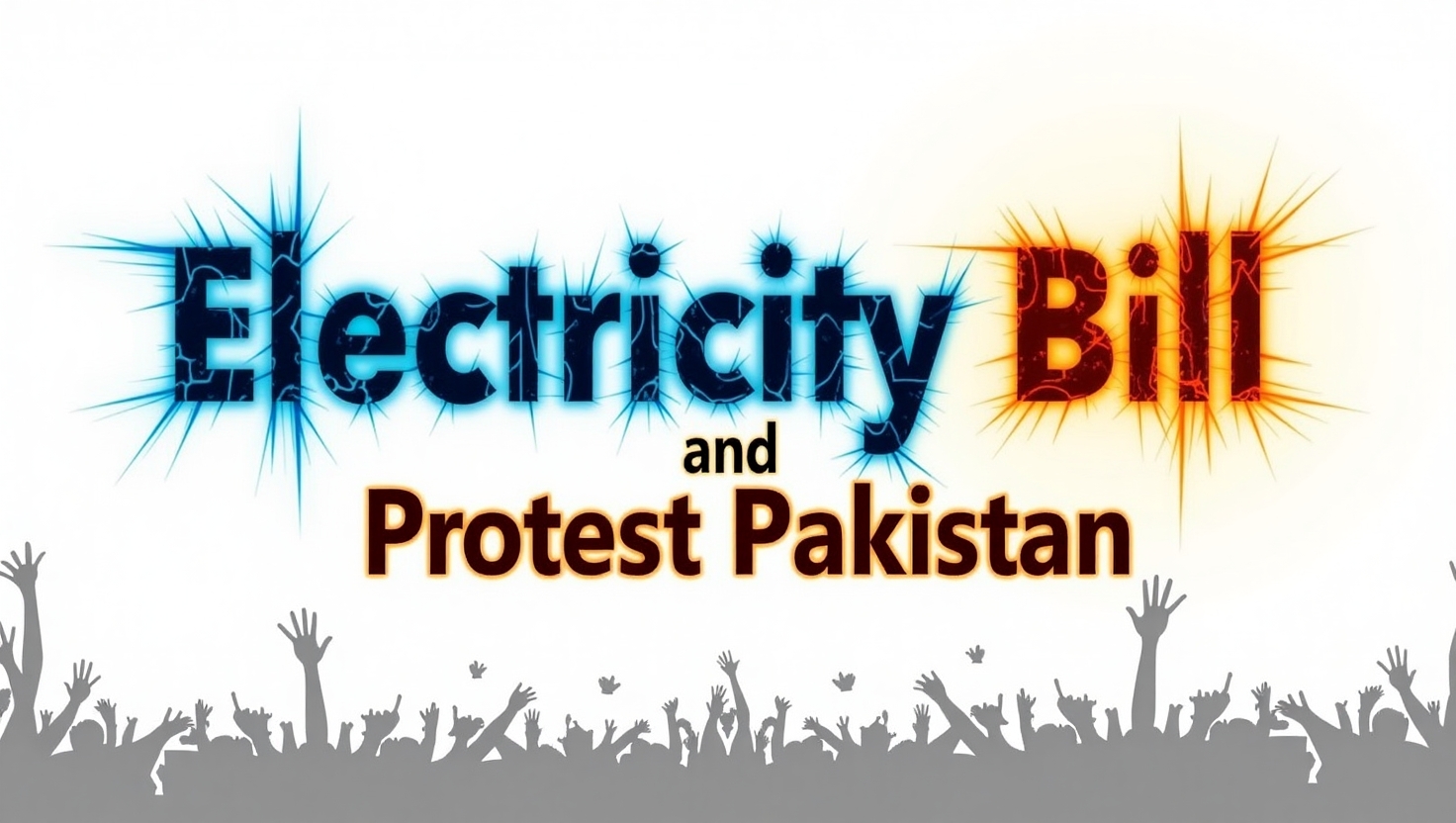In the past several weeks, protests have spread across Pakistan because of high energy costs. People from all walks of life have taken to the streets to demand relief. The protests are all over the place, from big cities like Karachi and Lahore to smaller towns in Sindh, Punjab, and Khyber Pakhtunkhwa. They all have the same loud and obvious message: “We can’t pay anymore.” This public movement isn’t just about power; it’s about staying alive economically.

Electricity Bill Protest Pakistan
The current issue didn’t happen all of a sudden. Pakistan’s energy sector has been having a hard time with cyclic debt, poor management, a heavy reliance on imported fuel, and old infrastructure for the past few years. Reports say that by mid-2025, the power sector’s circular debt will have gone above Rs. 3.5 trillion, putting a lot of stress on both the government and the people.
The IMF-backed changes to remove subsidies and make up for all costs have also caused electricity rates to go up by a lot. In just the previous year, unit rates on home bills have gone up by more than 35%. The monthly energy bill has become more than just a financial burden for millions of low- and middle-income families. It is now a threat to their capacity to buy food, medicine, and other necessities.
Huge protests all throughout Pakistan
In July 2025, there were protests in almost every province. Traders in Lahore closed down whole markets in protest. Long processions in Karachi blocked major routes. People were posting pictures of themselves burning their electricity bills in anger all over social media.
People are chanting things like:
“Bill for electricity, hill for oppression!”
“Roti chhino, lekin bijli ka bill maaf karo!”
“Mehengai se mar gaye, bills se jiyen kaise?”
People are no longer willing to pay exorbitant unit rates, taxes, fuel price adjustments (FPA), and extra fees that show up on their monthly invoices. Some households said their bills were more than Rs. 30,000 even though they didn’t use a lot of electricity.

Effects on the Working Class
This problem is terrible for people who work for a salary or get paid by the hour. To save money, a lot of families now live in the dark for part of the day. individuals in rural regions have gone back to using candles and gas lamps. In urban areas, low-income neighbourhoods are getting more load-shedding because individuals aren’t paying their bills.
Electricity used to be a basic need, but now it’s a luxury for many families in Pakistan.
Business owners and traders join in
Shopkeepers and small business owners have also joined the demonstration. Many people say they have to close their shops early or lay off workers to save money because their electricity bills are typically more than Rs. 100,000 a month. Ice manufacturers, cold storage units, and bakers are having a lot of trouble.
“We’re spending more on electricity than we’re making.” A bakery owner in Multan said during a TV interview, “This can’t go on.”
What the government did
The government’s response has been uneven so far. Officials say that the latest rate increases were caused by IMF conditions and worldwide fuel prices, even though they understand the complaints.
The caretaker prime minister and the energy minister have convened impromptu press conferences to promise “relief packages,” which include:
Some taxes on bills may be removed.
Payment plans for families that are affected
Talks with the IMF to rethink changes in the energy sector
But these pronouncements haven’t done much to assuage people’s fury. Most of the people who are protesting think that the government hasn’t done enough to safeguard people from inflation and economic policies that come from other countries.
What comes next?
The protest against the electricity bill has come to stand for a bigger problem with the economy in Pakistan. People are not only protesting high energy prices; they are also opposing corruption, bad government, inflation, and a lack of accountability.
If the problem isn’t fixed right away, it could get worse. Analysts say that ongoing civil unrest might have an impact on the country’s political stability, industrial production, and possibly investor confidence.
The government needs to move quickly and be open about what it does because the public is losing patience. Cutting down on expensive fuel imports, putting money into solar and wind energy, and restoring the gearbox system should all be long-term aims. But people need help right away, before the gloom becomes the new normal.
Last Thoughts
The protests against high energy rates in Pakistan are more than just a revolt against high costs; they are a desperate call for fairness and low prices in an economy that is falling apart. As the protests get bigger, it becomes evident that Pakistan’s energy issue might lead to more social and political unrest if there aren’t any dramatic changes and real leadership.
Electricity Bill Protest Pakistan 2025, high electricity bills in Pakistan, July 2025 protests, electricity price hike, electricity unit rate Pakistan, Pakistani economy crisis, IMF electricity policy, circular debt Pakistan, energy crisis Pakistan, public protest against electricity bills




